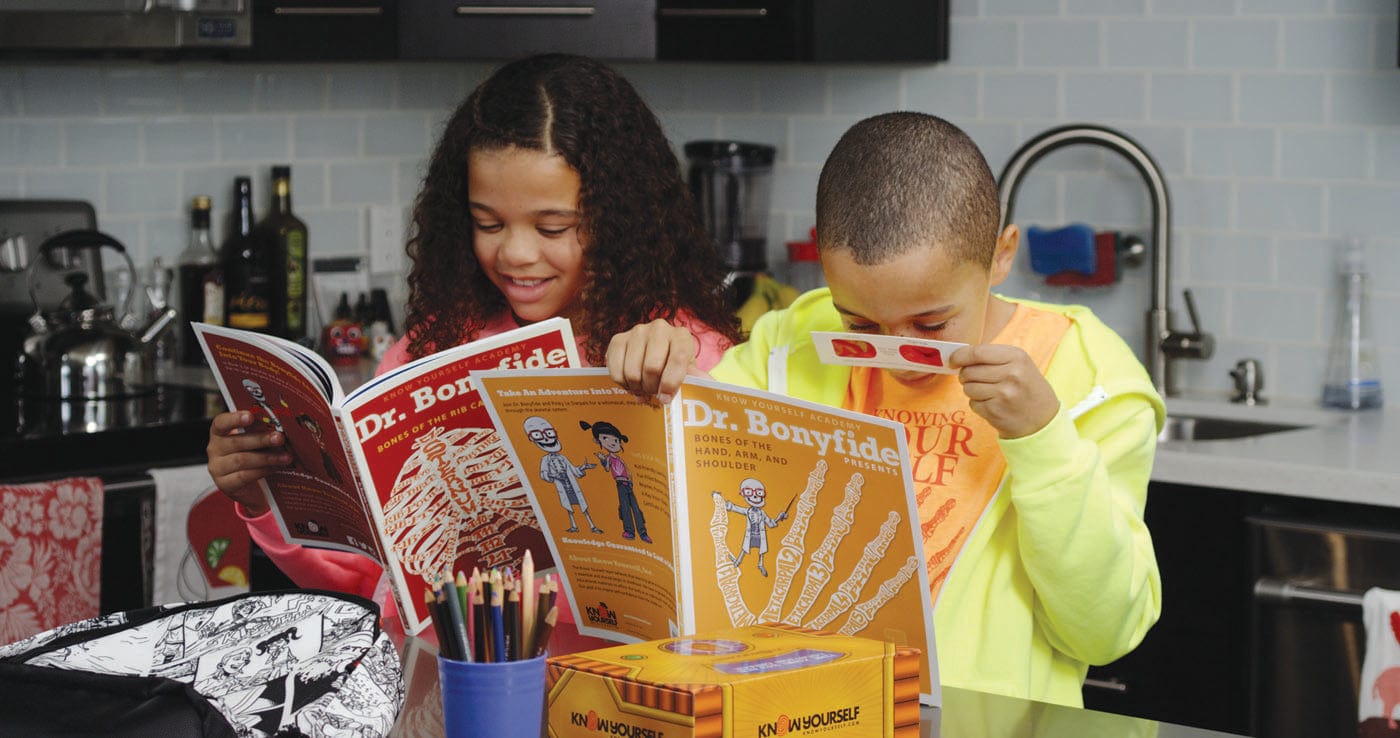
Your immune system protects your most important resource: you! And its defenses are formidable: harmful invaders like bacteria, viruses, or parasites have to get through several complex layers of protection to do their damage. Not only do they have to breach physical and chemical barriers, they’ve got to dodge front-line cells and evade tools specially trained to seek and destroy them. The three lines of defense are barrier defenses,the innate immune system,and the adaptive immune system.
Barrier Defenses
Say you come in contact with a pathogen(Say it like this: PATH-uh-gen)—something that makes you sick, what we often call “germs” or “bugs”—by touching a contaminated surface. You won’t know it, because germs are too small to see, but your immune system is already prepared to battle this potential invader. The first layer of security consists of barrier defenses.Your skin blocks germs with a physical barrier, like the strong walls of a fort. Things like bacteria either get destroyed by a chemical called lysozyme (say it like this: LAHY-suh-zahym) or they simply fall off your skin when it sheds its top layer of cells. Airborne pathogens that you breathe get caught by mucous (Say it like this: MYOO-kuhs) membranes and tiny hairs called cilia (say it like this: SI-lee-uh) along your respiratory tract. Chemicals in your stomach are also a barrier defense, destroying many germs you ingest.
The Innate Immune System
If the pathogen makes it past these barriers, we call it an infection, and it will have to battle the immune system’s second line of defense - the innate immune system. “Innate” means “present from birth”—these cells don’t need any special training to know how to get rid of germs! This is a collection of white blood cells, or leukocytes(LUKE-uh-sites), that recognize and destroy invaders. The attack starts with mast cells and macrophages (MACK-row-fayj-es), that “eat” infected cells. Messenger cells called cytokines [SAI-tow-kines] then signal other white blood cells, like neutrophils, eosinophils,and basophils (say them like this: NEW-truh-fils,ee-uh-SIN-uh-fils, and BEY-suh-fils) to join the fight.
This will probably be the first sign that your immune system is waging a battle because this is when you might get a fever or feel run down. The fever helps kill germs by heating them, and you feel tired because your body using the energy to fight illness.)If you have a cut or scrape that is infected, it might become swollen (from blood cells arriving), feel warm to the touch, or fill with pus—a fluid containing more white blood cells.
The Adaptive Immune System
While your innate immune system responds immediately to invaders, the third layer of defense is preparing to send in its troops. This is your adaptive immune system, and it includes B-cells and T-cells, which have been trained to seek and destroy very specific pathogens.
It’s called “adaptive” because these cells “remember” viruses and bacteria from a time you were previously sick. Germs can display unique markers on their surface, called antigens, which the cells of the adaptive immune system recognize. You can think of it like a special birthmark or a tattoo.
Like a detective looking for a suspect, dendritic (Say it like this: den-DRI-tuhk) cells go to the lymph (Say it like this: limf) nodesand show the antigens to the B- and T-cells to see if any of them recognize the invading organism. When they do, they recruit other immune cells and release special proteins called antibodies to destroy the germs, once and for all.
We all come in contact with thousands of types of germs every day, but because our bodies have a clever, multi-layered security system, we don’t get sick from most of them. And when you do get sick, your immune system’s got your back - and the rest of your body.
Activity: Give Your Immune System a cleanhand
Your immune system does a great job of employing the three techniques you read about in this week’s Scientific Spotlight to block out, recognize, and destroy pathogens. There are a few simple ways you can help it by destroying or blocking germs before they even get to your body’s layers of defenses. Basic hygiene like washing your hands thoroughly with warm, soapy water helps prevent the spread of germs to your food, surfaces you touch, and your nose and mouth by destroying and washing them away.If you get a cut or scrape, you can cover it with a bandage to keep germs out.
| Activity | Barrier, Innate or Adaptive? |
|
Hand Washing |
|
|
Use of Hand Sanitizer |
|
|
Covering a Wound with a Bandage |
|
|
Applying Antibiotic Ointment to a Wound |
|
|
Covering Your Mouth and Nose When You Sneeze or Cough |
|
|
Wearing a Mask |
|
|
Cooking Your Food |
|
|
Cleaning Surfaces |
|
|
Not getting sick from the same germ twice |
Activity Answers (Click to reveal)
| Activity | Barrier, Innate or Adaptive? |
|
Hand Washing |
Barrier |
|
Use of Hand Sanitizer |
Innate |
|
Covering a Wound with a Bandage |
Barrier |
|
Applying Antibiotic Ointment to a Wound |
Innate |
|
Covering Your Mouth and Nose When You Sneeze or Cough |
Barrier |
|
Wearing a Mask |
Barrier |
|
Cooking Your Food |
Innate |
|
Cleaning Surfaces |
Innate/ Barrier |
|
Cleaning Surfaces |
Adaptive |









Leave a comment (all fields required)